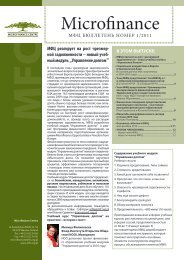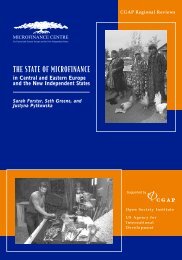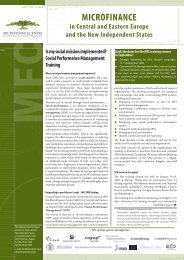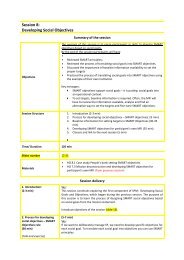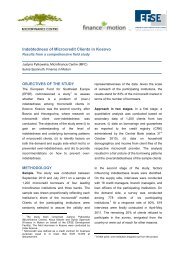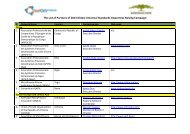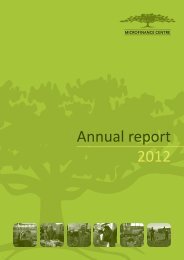Value Chains research report Tajikistan final - Microfinance Centre
Value Chains research report Tajikistan final - Microfinance Centre
Value Chains research report Tajikistan final - Microfinance Centre
You also want an ePaper? Increase the reach of your titles
YUMPU automatically turns print PDFs into web optimized ePapers that Google loves.
Traders and Wholesalers<br />
Farmers sell lemons fresh from greenhouses and from storage. The sales period runs<br />
from November through July. Customers come from Kurgan-tube, Tursunzade,<br />
Dushanbe and Khujand. In the past nearly 80% of the customers were from Uzbekistan<br />
and Russia. Currently 100% of the lemons are sold in <strong>Tajikistan</strong>. Traditional sales are<br />
from the farm gate. Producers do not actively market their product. Notification of the<br />
arrival of buyers occurs quickly through the local customers or local mosque. In the past<br />
buyers came with large trucks purchasing tons of lemons, now they come in cars and<br />
purchase small quantities. They bring their own boxes or order them from local foremen.<br />
Even when buyers come many farmers are at a disadvantage as buyers do not want<br />
small lemons which constitute 20% of the crop. There is a significant price differential<br />
paid farmers depending on distance from market centers.<br />
Logistics of sales.<br />
Lemons are delivered from the production sites in Khatlon Region to “Dekhkon” market<br />
in Giprozem district of Dushanbe, from where they are distributed to nearby markets.<br />
The produce is also transported to Bobojon Gafurov district of Sughd Region, to be<br />
distributed throughout the region through markets in Khujand.<br />
Lemons grown in Sughd Region are also distributed through Panjshanbe – the Central<br />
market of Khujand. Thus, the prices in the central districts of national jurisdiction and in<br />
other markets are higher than in “Dekhkon” market in Dushanbe; respectively, prices in<br />
the towns and districts of Sughd Region are higher than in the Panjshanbe market of<br />
Khujand.<br />
In previous years, lemons were transported until November 15 at most (until mountain<br />
roads were closed for winter), and stored in Sughd Region. Now the road through the<br />
tunnels is open around the year, so lemons are stored by the farmers. The connections<br />
within the business sector are well established (mostly based on relations of kin), and<br />
lemons are ordered by phone, according to the market demand. Transportation from the<br />
grower is made in small shipments (400-600 kg), using cars, is the most convenient, as<br />
fresh produce is delivered to the markets as demanded. This also eliminates the need<br />
to rent warehouses at the market where lemons are sold.<br />
From the export viewpoint, it should be noted that Uzbekistan creates problems for<br />
sending goods by railroad from the Southern <strong>Tajikistan</strong>; however, borders in Sughd<br />
Region are more or less open. For this reason, produce for export to the CIS countries<br />
is prepared in the North before being shipped to the destination country.<br />
According to state standard requirements, lemons are shipped in batches. A batch is<br />
any quantity of lemons of the same variety and the same size category, packed in<br />
containers of the same type and size. However, when the lemons are delivered to<br />
collection points or ranging/packing enterprises, the batches can contain any quantity of<br />
lemons of different sizes and varieties, in packages of all types and sizes.<br />
77




